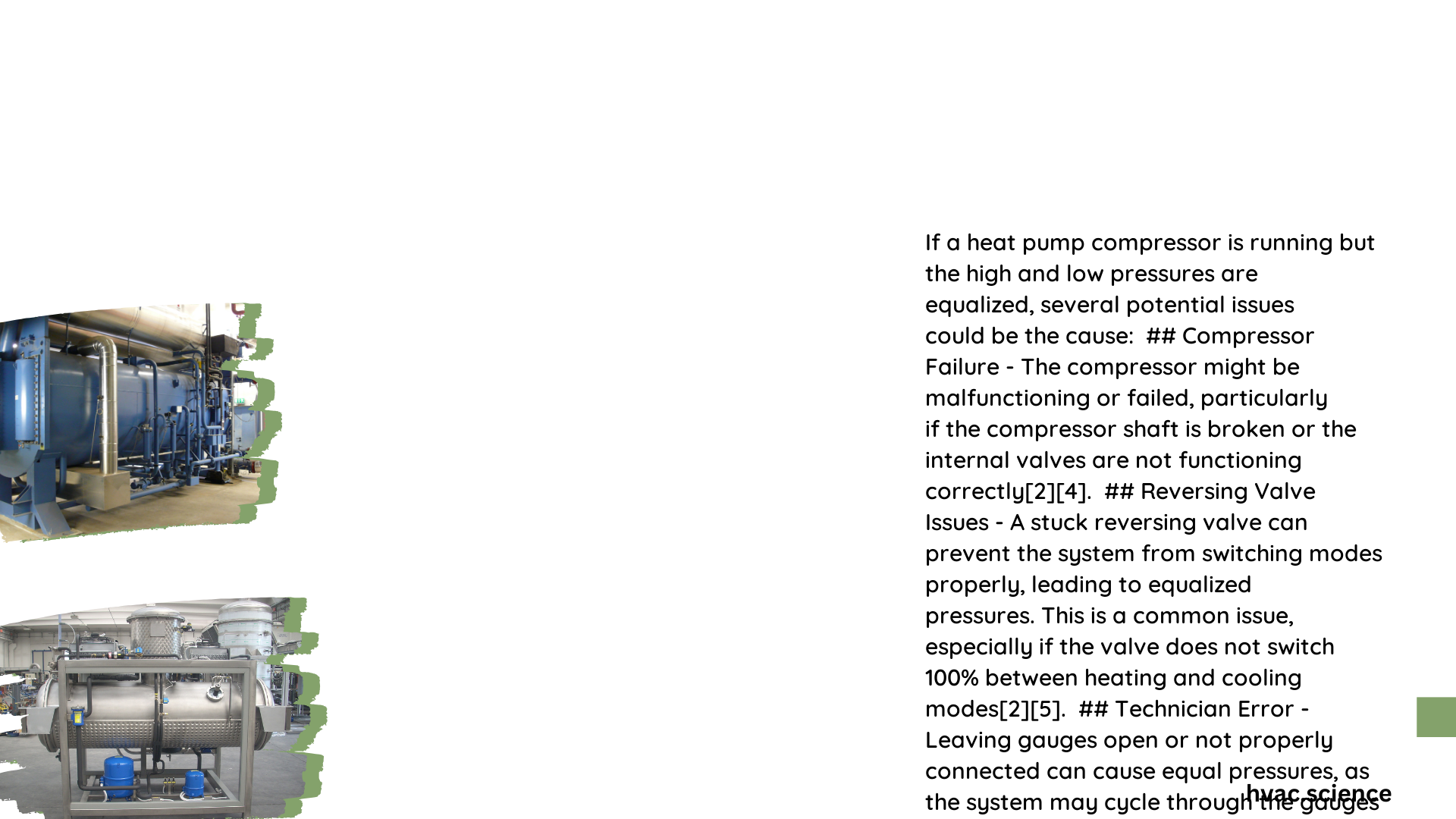When a heat pump compressor is running but pressures are equalized, it indicates a significant issue in the system. This problem can lead to reduced efficiency, increased energy consumption, and potential system failure. Understanding the causes, diagnostic steps, and solutions is crucial for maintaining optimal heat pump performance and avoiding costly repairs.
What Are the Common Causes of Equalized Pressures in a Running Heat Pump Compressor?
Several factors can contribute to equalized pressures in a heat pump system:
- Compressor Failure: The compressor may not be effectively compressing the refrigerant.
- Stuck Reversing Valve: Prevents proper mode switching in the heat pump.
- Technician Error: Improperly connected or open gauges can cause false readings.
- Internal Pressure Relief: High pressure may be dumping into the suction side.
- Restrictions: Issues with the indoor metering device or bi-flow drier.
How Can You Diagnose Equalized Pressures in a Heat Pump System?

To diagnose equalized pressures, follow these steps:
- Check Gauge Connections: Ensure gauges are properly connected and closed.
- Inspect Compressor Operation: Listen for unusual sounds and check electrical consumption.
- Test Reversing Valve: Verify proper mode switching.
- Measure Pressure Differentials: Compare high and low side pressures.
| Side | Normal Pressure (R-410A) | Equalized Pressure |
|---|---|---|
| High | 250 PSI | 110 PSI |
| Low | 100 PSI | 110 PSI |
What Tools Are Needed for Troubleshooting Equalized Pressures?
Essential tools for diagnosing equalized pressures include:
- Refrigerant gauges
- Multimeter
- Thermometer
How Do Equalized Pressures Affect Heat Pump Efficiency?
Equalized pressures can significantly impact heat pump performance:
- Reduced cooling capacity
- Increased energy consumption
- Potential compressor damage
What Are the Expected Pressure Readings in a Properly Functioning Heat Pump?
In normal operation:
– High side pressure should be 2-3 times the low side pressure
– Example: 250 PSI (high side) vs. 100 PSI (low side) for R-410A
How Do Equalized Pressures Affect Compressor Performance Metrics?
Equalized pressures can lead to:
- Abnormal pressure ratios (1:1 instead of 2-3:1)
- Reduced compressor amperage
- Potential compressor failure
What Are the Potential Failure Modes Associated with Equalized Pressures?
- Compressor Failure: May require complete replacement
- Reversing Valve Malfunction: Can prevent proper mode switching
How Often Should Heat Pump Pressures Be Checked?
Regular maintenance is crucial:
- Annual system checks recommended
- Include pressure readings, compressor inspection, and reversing valve tests
What Components Should Be Monitored to Prevent Equalized Pressures?
Key components to monitor:
- Compressor
- Reversing valve
- Refrigerant gauges
- Metering devices
What Are the Typical Repair Costs for Issues Causing Equalized Pressures?
Repair costs can vary:
- Compressor Replacement: $500 – $2,000
- Reversing Valve Replacement: $200 – $500
- Annual Maintenance: $100 – $300
How Can Homeowners Prevent Equalized Pressure Issues?
Preventive measures include:
- Schedule regular maintenance
- Monitor system performance
- Address unusual noises or reduced cooling promptly
By understanding the causes and solutions for heat pump compressor running but pressures equalized, homeowners and technicians can ensure optimal system performance and longevity.
References:
1. https://www.youtube.com/watch?v=R7RMHplhiUI
2. https://forum.ih8mud.com/threads/ac-pressures-equal-hi-and-low-with-lc-running-and-compressor-loaded.1016239/
3. https://hvac-talk.com/vbb/threads/1521461-Heat-Pump-Condenser-Equal-Pressures
